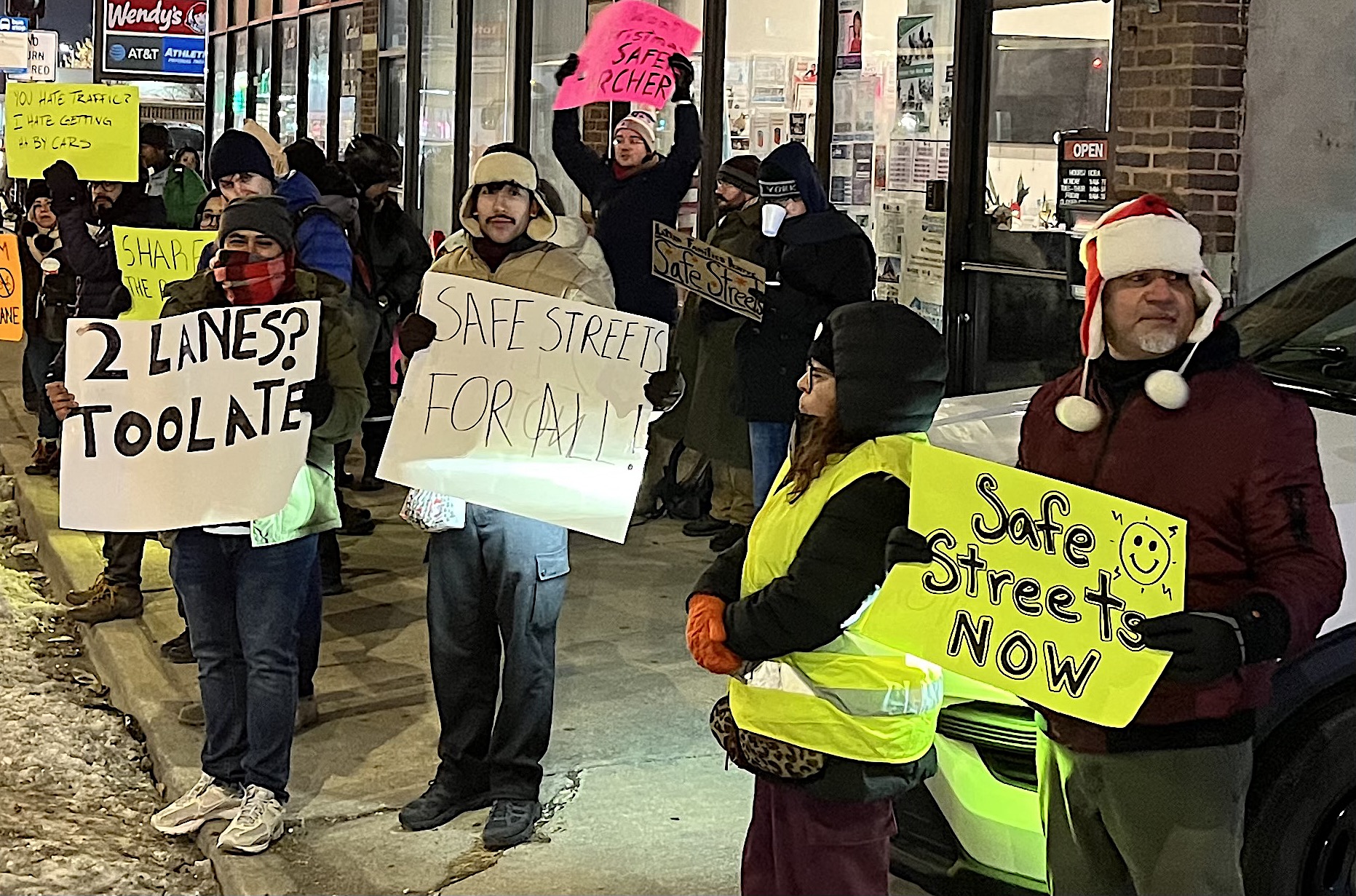It might seem strange, but there are still plenty of people who ride bikes but don't like the idea of protected bike lanes that much, or even bike infrastructure altogether.
Bill Lindeke at Twin City Sidewalks says he rides with many of those folks in Minneapolis -- cyclists who have been characterized as "strong and fearless." The car-centric streets of the Twin Cities don't deter them from riding. But these elite cyclists are only a small fraction of the general population.
The subset of bike culture that accepts status quo street design as adequate, Lindeke says, has its roots in a schism dating back to the 1960s, when proponents of bicycling as recreation and competitive sport (the "elites") battled advocates of bicycling as transportation (the "egalitarians"):
Back in the early days, according to bicycle historian Bruce Epperson, bicycle advocates at UC-Davis wanted to adopt an “egalitarianist” approach to bicycle design. These early cycletracks were modeled after the Northern European cycling philosophy that wedded separated designs of bicycle paths with a geographic system that encouraged utility trips through urban space, in this case, through the sprawling campus of an agricultural university.
The key difference between the cycletrack approach and the status quo in the US was that cycletrack planners saw bicycling as primarily for transportation as opposed to recreational or athletic purposes. This difference meant that bicycle planners had to simultaneously design routes for the broadest possible audience (“lowest common denominator”), while placing routes through key parts of the city to link important destinations.
This philosophy provoked a negative reaction by influential bicycling advocates, who at the time were focused on working through some early attempts at guides for bicycling safety and bicyclist education. For example, one influential bicycle engineer described “transportation and utility aspects” of cycling as being “only offsprings” of recreational riding and competitive racing (Konski quoted in Epperson 2013 31). Konski was emphatic about the need for competitive bicycle racing to serve as a model for riding.
According to this philosophy, competitive (male) bicycle racing was intended to serve as a model for everyday riders throughout the nation.
The latter philosophy, while declining, still has some vocal adherents. The question is, who should we design our streets for -- competitive racers, or everyone else?
Elsewhere on the Network today: Systemic Failure reports that U.S. DOT's hard and fast "Buy America" rule are more flexible when highway funding is at stake. Better Institutions explains how extreme heat affects every mode of transportation. And Real Hartford reports that officials at the Connecticut DOT seem to be rather disdainful of public opinion.





